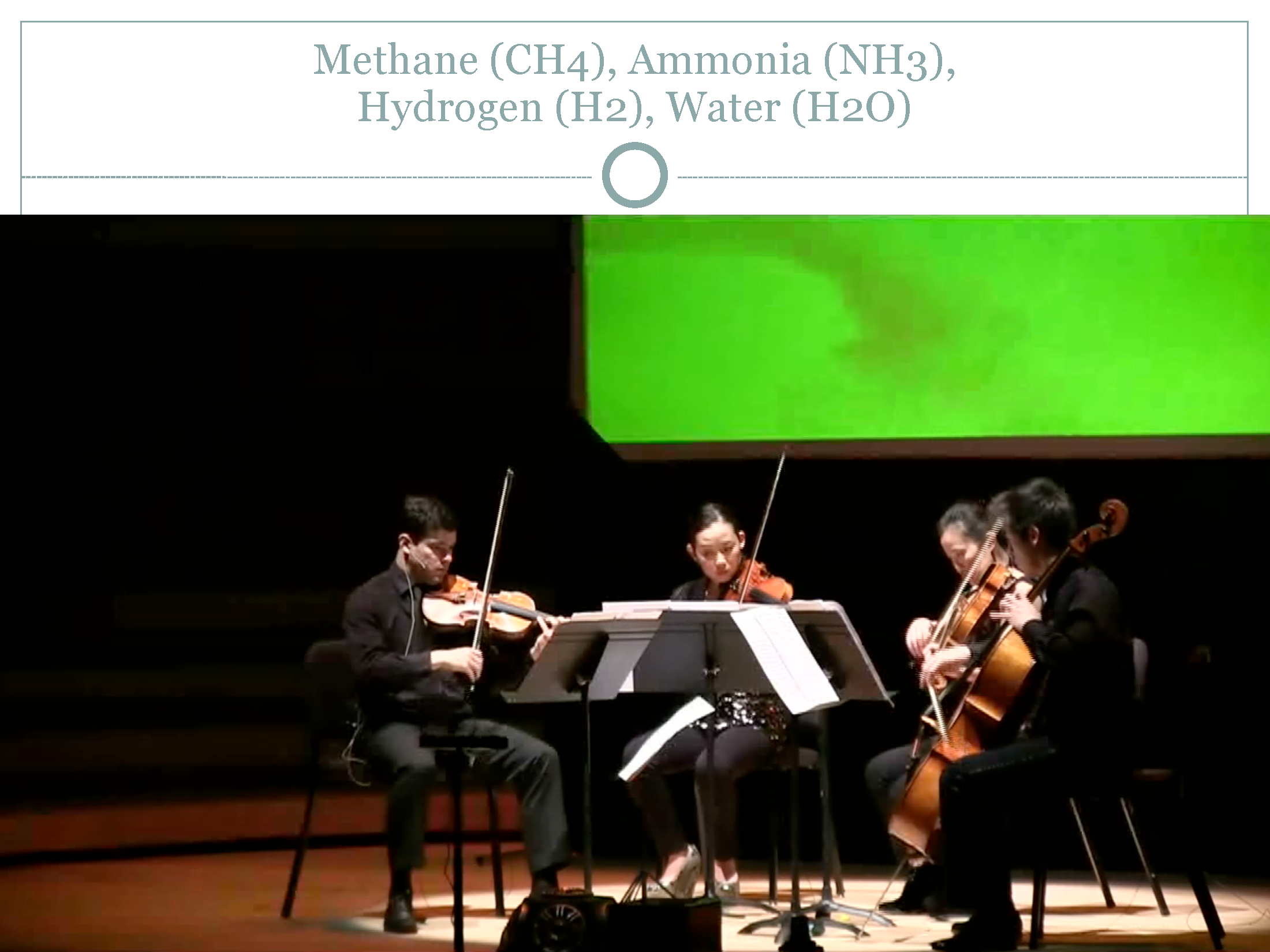Posté par: SteveEVERETT Il y a 1 année, 3 mois
This presentation discusses the creation of FIRST LIFE, a 75-minute mixed media performance for string quartet, live audio and motion capture video, and audience participation utilizing stochastic models of biochemical data provided by the Grover Research Group at the Georgia Institute of Technology, USA. Each section of this work is constructed from contingent outcomes drawn from research exploring possible early Earth formations of organic compounds.
This project created auditory models of the possible elemental and environmental conditions present in early Earth thus providing a new way to imagine the salient biochemical morphologies at play in the origins of evolution. The goal was to create both an artistically sensitive realization of the scientific data and to provide an educational opportunity for audience participants to engage with the fundamental principles of this research project into the origins of life.
Data values drawn from self-organizing chemical compounds were assigned to the sonic properties of frequency, amplitude, duration, timbre, tempo, string instrument physical properties, and spatial location. The stochastic processes also contain Hidden Markov Models that embed a degree of probabilistic input from the computer-generated processing, the string quartet performers, and audience.
The performance attempts to model a biological organism’s ability to respond to the conditions of its environment and to learn from its own history. Data representation types in this composition include discrete, continuous, stochastic, and interactive forms.
In attempting to develop a sonic platform that could contain structural dimensions of the possible chemical properties of early life and rather than begin with a traditional process of data mapping, I chose to adopt the seven essential principles of life as outlined by UC-Berkeley biochemist Daniel E. Koshland for the construction of the work.
1. Program
2. Improvisation – describes the possibility that a system can change its program in order to adapt to new environmental conditions
3. Compartmentalization
4. Energy
5. Regeneration - takes into account thermodynamic losses
6. Adaptability
7. Seclusion - “privacy” in the social world. This property of life makes it possible for biochemical processes to take place independently in cells without disturbing one another.
Audio-visual programs used in the composition and live performance of the work are MAX, Kyma, Isadora, AudioSculpt, Spat, OpenMusic, and Modalys. The live motion capture video system uses two Microsoft Kinect.
For this talk Steve Everett use :
This talk will be presented during the Ircam Forum Workshop in Seoul at the Seoul National University
More info on the event

Partager sur Twitter Partager sur Facebook
Commentaires
Pas de commentaires actuellement
Nouveau commentaire